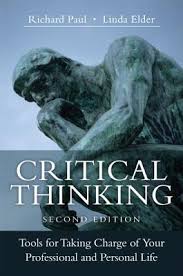Strategic Thinking for Innovation and Entrepreneurship
A White Paper on Integrating Critical Thinking, Problem-Solving, Competitive Strategy, and Knowledge Management Tools for Sustainable Success
Executive Summary
Entrepreneurship thrives on the ability to navigate uncertainty, solve complex problems, and continuously innovate. This white paper explores how integrating critical thinking, structured problem-solving, competitive strategy, and innovation methodologies—supported by tools like mind mapping and the Zettelkasten system—can enhance decision-making, creativity, and execution. Through case studies and practical frameworks, it offers actionable insights for entrepreneurs, intrapreneurs, and innovation-driven organizations.
1. Critical Thinking: The Foundation of Entrepreneurial Judgment
Critical thinking involves questioning assumptions, analyzing information, evaluating evidence, and synthesizing insights for sound decisions (23).
Key Practices:
- Clarify context and goals: Understand the problem space before acting.
- Detect assumptions and biases: Especially in investor pitches or market sizing.
- Evaluate evidence rigorously: Differentiate between causation and correlation.
- Connect insights: Create hypotheses or value propositions from data patterns.
Entrepreneurial Use Case:
A health tech startup used critical thinking to identify a hidden assumption in the market—that older adults wouldn't adopt wearable health tech. Through interviews and secondary data analysis, the team validated demand among seniors, leading to the launch of a simplified, high-adoption-rate device.
2. Structured Problem-Solving: Techniques for Clarity and Execution
Entrepreneurial problems are complex and ambiguous. Structured methods help dissect and solve them efficiently (12).
Tools and Applications:
| Technique | Use Case in Entrepreneurship |
|---|---|
| SCAMPER | Ideate product pivots by substituting or combining features. |
| Fishbone Diagram | Root cause analysis for product return or churn issues. |
| Pareto Principle | Focus on top 20% of features generating 80% of value. |
| Mind Mapping | Brainstorm funding strategies, product roadmaps, or pain points. |
Startup Use Case:
A logistics SaaS startup used a Fishbone diagram to identify regulatory documentation as the root cause of client onboarding delays. Streamlining that process reduced churn by 35%.
3. Competitive Strategy for Startups: Porter's Framework in Action
Michael Porter's generic strategies (3) guide entrepreneurs in positioning their offerings.
Strategies:
- Cost Leadership: Use automation or outsourcing to offer lower-cost services (e.g., Amazon Web Services’ pricing model).
- Differentiation: Focus on design, UX, or customer experience (e.g., Notion's minimalist UI).
- Focus Strategy: Serve niche segments—cost focus or differentiation focus (e.g., Duolingo’s freemium language learning).
Use Case:
A femtech startup pursued differentiation focus by creating culturally tailored menstrual health apps for underrepresented regions, using community influencers as ambassadors.
4. Innovation Engineering: From Problems to Scalable Solutions
Innovation Engineering systematizes innovation into repeatable steps (4).
Key Stages:
- Identify a compelling problem (e.g., carbon footprint of delivery fleets).
- Prototype manually: Test solutions on small scales.
- Use customer-first design: Apply design thinking.
- Modularize the solution: Build scalable MVP components.
- Leverage emerging tech: e.g., AI, blockchain, IoT.
Entrepreneurial Use Case:
An edtech venture rapidly tested and refined AI-driven personalized learning using pilot programs in three schools, reducing product development time by 70%.
5. Tools for Structured Thinking and Knowledge Management
5.1 Mind Mapping for Creativity and Strategic Planning
Mind maps use visual and radial thinking to clarify complexity (13).
- Applications: Business model development, user journey mapping, marketing plans.
- Tools: Ayoa, XMind, Mindomo.
Example:
A SaaS startup mapped all potential user objections visually and aligned product messaging to address each branch. Conversion rates increased by 22%.
5.2 Zettelkasten for Entrepreneurial Knowledge Management
Zettelkasten transforms note-taking into a connected thinking process (14, 15).
Workflow:
- Fleeting Notes: Capture spontaneous ideas or quotes.
- Permanent Notes: One clear idea per note.
- Linked Notes: Contextually connect topics (e.g., customer discovery → pricing models).
Use Case:
A green tech startup founder used Zettelkasten in Obsidian to link academic research, market trends, and investor feedback, enabling strategic decision-making and pitch preparation.
6. Integrated Case Study: A Fintech Startup's Journey
Company: NuoBank, a digital-native microfinance platform.
| Discipline | Application |
|---|---|
| Critical Thinking | Challenged legacy belief that low-income clients won’t trust apps. |
| Problem-Solving | Used Pareto chart to identify key user drop-off points. |
| Competitive Strategy | Chose differentiation focus with gamified financial literacy tools. |
| Innovation Engineering | Prototyped a credit scoring engine using alternative data in 10 weeks. |
| Mind Mapping | Charted key product features by user personas. |
| Zettelkasten | Linked policy changes, market insights, and UX feedback for agile decisions. |
Result: 10x growth in six months, Series A raised from impact investors.
Conclusion
Entrepreneurship demands more than hustle—it requires structured, strategic thinking. By integrating critical thinking, problem-solving frameworks, competitive strategy, and innovation tools like mind maps and Zettelkasten, entrepreneurs and intrapreneurs can transform uncertainty into opportunity. Embedding these practices into daily workflows builds resilient, adaptive organizations ready for sustained innovation and growth.
References
- Monash University. What is Critical Thinking. https://www.monash.edu/student-academic-success/enhance-your-thinking/critical-thinking/what-is-critical-thinking
- Reddit DevOps. Problem-Solving Techniques. https://www.reddit.com/r/devops/comments/zbgbrq/problem_solving_techniques/
- University of Cambridge. Porter's Generic Strategies. https://www.ifm.eng.cam.ac.uk/research/dstools/porters-generic-competitive-strategies/
- Sphere Inc. Innovation Engineering Explained. https://www.sphereinc.com/blogs/what-is-innovation-engineering/
- Ayoa. How to Use Mind Maps. https://www.ayoa.com/ourblog/how-to-use-mind-maps-for-problem-solving/
- Zettelkasten.de. Zettelkasten Thinking Environment. https://zettelkasten.de/posts/zettelkasten-thinking-environment/
- Atlassian Blog. Zettelkasten Method. https://www.atlassian.com/blog/productivity/zettelkasten-method
- MindMapping.com. Mind Map Overview. https://www.mindmapping.com/mind-map
- GoodNotes Blog. Mind Mapping Methods. https://www.goodnotes.com/blog/mind-mapping-methods
- Wikipedia. Critical Thinking. https://en.wikipedia.org/wiki/Critical_thinking
- SessionLab. Problem-Solving Techniques. https://www.sessionlab.com/blog/problem-solving-techniques/



